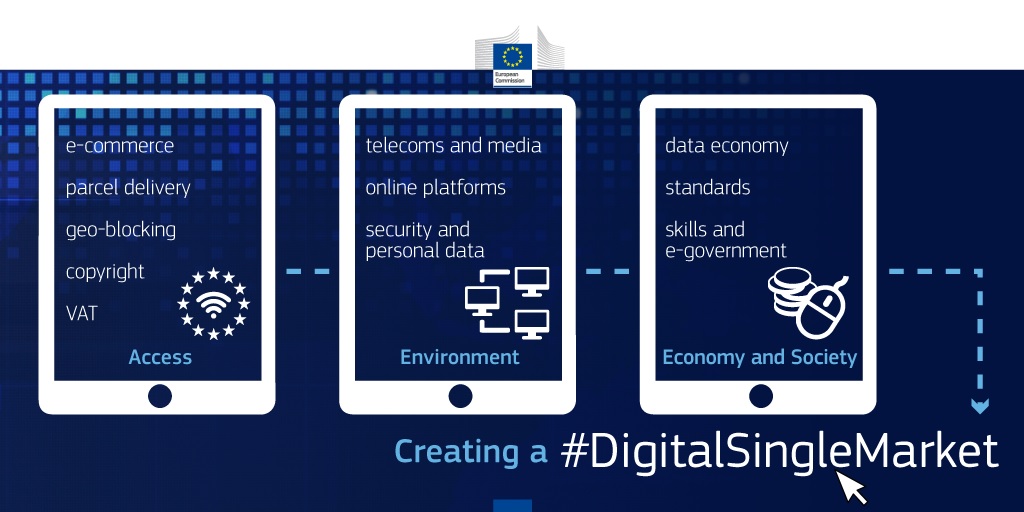EU Goes Digital

Winter is being a very hot season for the digitalization of Europe, a revolution that could contribute €415 billion per year to our economy and create hundreds of thousands of new jobs. The Digital Single Market for Europe (DSM) gave an important step in the unification of rules to strengthen fundamental rights and the European Market in December 2015 with the agreement on the reform of the Data protection rules and the first EU wide cybersecurity legislation – the Network and Information Systems Directive.
The months to come will bring us the results of several public consultations reflecting the pace of technology and hinting how the infrastructure’s development should evolve:
- Public consultation: eGovernment Action Plan 2016-2020 (closed 22/1/2016): The new eGovernment Action Plan 2016-2020 will address the needs and expectations of European citizens and businesses with respect to the delivery of efficient and user-friendly government services in the EU.The ISA² programme will contribute with €131 million to improve the interoperability solutions of public administrations.
- Public consultation on Standards in the Digital Single Market: setting priorities and ensuring delivery (closed 04/01/2016): With this consultation, the Commission seeks input from stakeholders to achieve broad convergence around a set of priority standards in key technology areas sufficiently mature and critical to achieving the Digital Snigle Market (DSM) and time-tables for their development, which are sufficiently mature and critical to achieving the DSM.
- Public consultation on the needs for Internet speed and quality beyond 2020(closed on 07/12/2015): looking into the needs for Internet speed and quality beyond 2020.
- Public consultation on the evaluation and the review of the regulatory framework for electronic communications networks and services (closed 07/12/2015): framework review built on an overall connectivity vision, taking into account the current and future connectivity needs of citizens, businesses and the public sector, which will result from the use of applications enabled by the DSM.
- Regulatory environment for platforms, online intermediaries, data and cloud computing and the collaborative economy, following the consultation launched by DG CONNECT, the main conclusions are expected to be shared next 25 February at the Digital4EU event.
Digital4EU 2016 is the second edition of the #Digital4EU Stakeholder Forum, which focused on President Jean-Claude Juncker's digital priorities. It will concentrate on five areas:
- The European Fund for Strategic Investments (EFSI) mobilising digital projects;
- Delivering the Digital Single Market – from the Digital Economy and Society Index (DESI) to action;
- The Digital Economy: the data and computing opportunities for Europe
- Innovate, start and scale-up;
- Platforms, is there a need to regulate?
As stated by President Juncker at the beginning of his term, the Commission is determined to transform our digital environment thus moving our single market to the digital age. With the three DSM pillars: 1) better online access; 2) enhancement of digital networks and services; and 3) digital as a motor for growth; the Commission is aiming at breaking down national regulatory barriers in order to maximize the potential of the digital impact.
These developments will also trigger large opportunities for the European labour force since it will radically transform work in the way we traditionally have known it and it goes beyond the ICT sector.
So, the EC plans in 2016 to organise a structure dialogue with social force on the impact of digitalisation; encourage and support the dialogue between industry and social actors to help industry to find the right skilled work force in Europe.
If you are looking for more insights do not hesitate to contact us on

By accepting you will be accessing a service provided by a third-party external to https://www.schumanassociates.com/
